Alcohol Abuse Statistics
2023
Alcohol is part of the daily routine of many modern societies despite being poisonous and addictive. While social drinking for many people can be considered pleasurable, it still remains as one of the most dangerous and significant risk factors for the health of the American population.
Alcohol abuse has been an ongoing issue most are aware of; however, there hasn’t been much progress dealing with it: the percentage of people struggling with alcohol use disorder has increased from 15 million to 28.3 million. As a result, 140,000 Americans die each year from alcohol-related causes. Alcohol impairs brain function, making people less able to control their behavior.
Michael & Associates has gathered the most recent alcohol misuse statistics you need to be aware of in 2022.
Topics Covered
Key Findings
- About 140,000 Americans die from alcohol-related causes annually.
- About 3 million people die from alcohol-related causes annually.
- 28.3 million Americans aged 12 and older had alcohol use disorder (AUD).
- Someone with an average income drinks about 6.2 liters of alcohol a year.
- Alcohol use accounts for 4% of all cancer deaths in the U.S.
- Wyoming has the highest alcohol-induced death rate in the U.S.
- The alcohol-specific death rate for British males is around twice the rate for females.
General Statistics

Worldwide, the hazardous use of alcohol is responsible for at least 3 million deaths annually, or 5.3% of all fatalities.
Men account for 7.7% of alcohol-related deaths globally, while women’s rate is 5.1% lower and results in 2.6% of deaths.
Alcohol remains a main factor in more than 200 diseases and injury conditions by contributing to 5.1 % of the global burden.

An ordinary person drinks about 6.2 liters of alcohol a year.
People aged 20-39 years old account for 13.5% of all alcohol-related deaths.

1.34 billion people are estimated to have consumed harmful amounts of alcohol in 2020.
Health Effects
Consuming too much alcohol once in a while usually has no long-term consequences on your health. However, if you binge drink on a regular basis, it can affect every aspect of the body, leading to numerous long-term as well as short-term health problems and, in severe cases, death.

Alcohol has an impact on short-term health risks such as motor vehicle crashes, falls, drownings, and burns.

By heavily drinking alcohol, you increase your chances of committing violent offenses, such as homicide, sexual assault, and intimate partner violence.
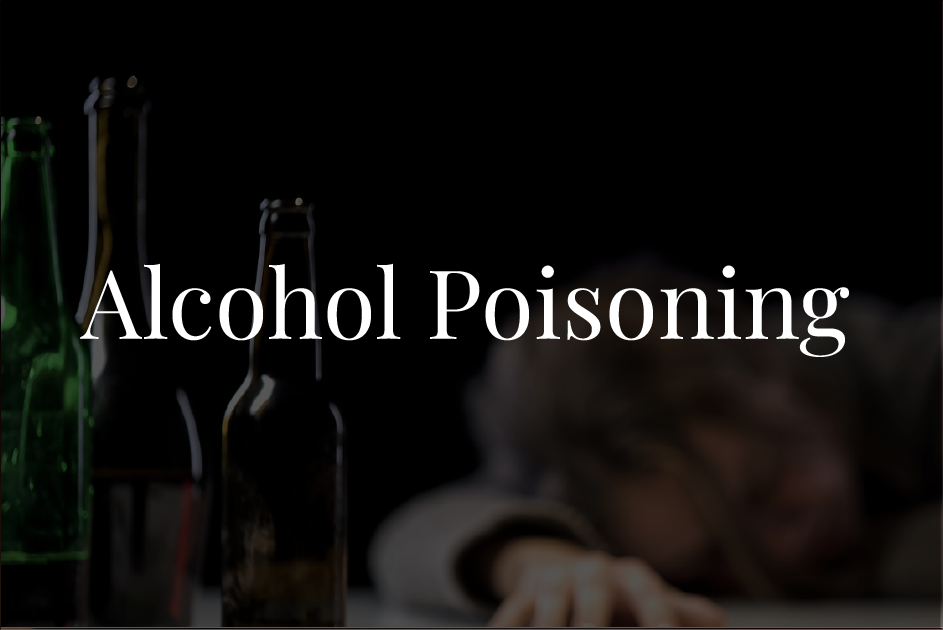
Alcohol poisoning happens when there is too much alcohol in your blood, causing sections of your brain to shut down. If it isn’t treated quickly, it could cause death or serious brain damage.
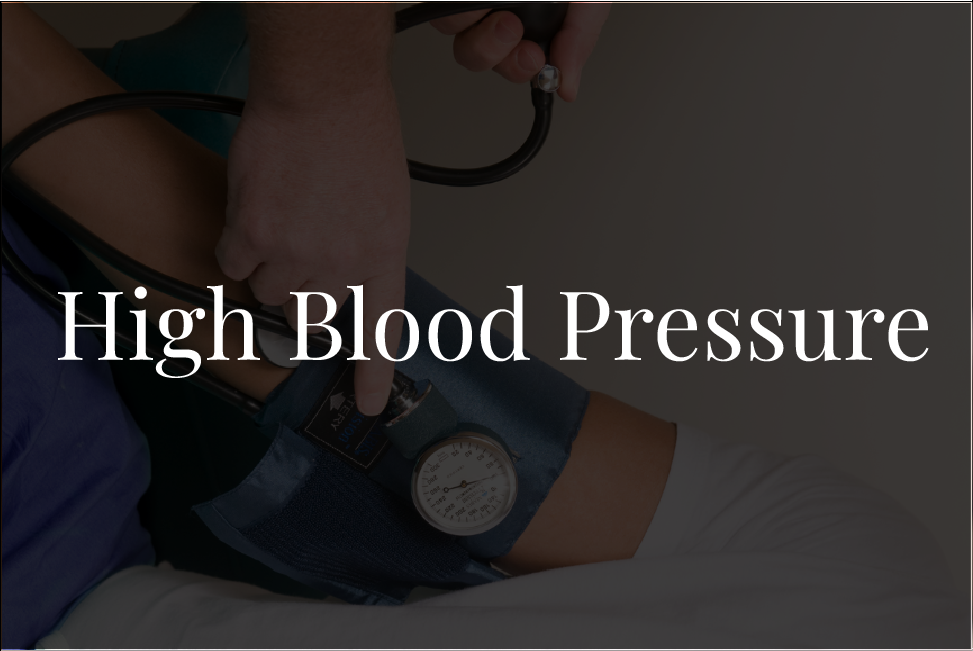
Sixteen percent of the population is impacted by alcohol-related hypertension or high blood pressure. By drinking more than two drinks regularly, you might be at high risk of developing hypertension.
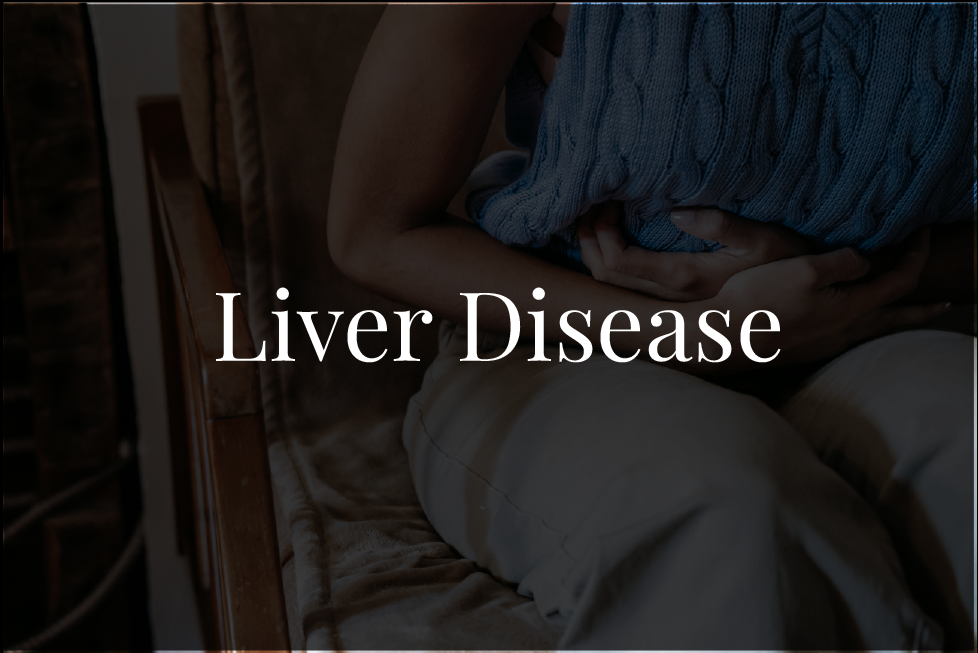
Regular alcohol consumption may also cause the liver to swell and become inflamed. Eight to ten percent of Americans binge drink, and as a result, 10 to 15% develop liver disease linked to alcohol consumption (ARLD). As a consequence, 43.5% of liver disease deaths in the U.S. were caused by alcohol.

Alcohol use accounts for 6% of all cancers and 4% of all cancer deaths in the U.S. Alcohol has been linked with cancers of the mouth, throat, voice box, liver, and breast. So, the more alcohol you drink, the higher the risk of getting cancer.
Alcohol Abuse and Depression
An estimated 21 million adults in the United States had at least one major depressive episode. Often, these episodes are connected to alcohol abuse.
Studies show that nearly two-thirds of people with major depression also have an alcohol problem. As a depressant, alcohol can make you get the blues, drink more, harm your brain, and get into a vicious cycle of depression. But what is the connection between alcohol and depression? Findings show that about 75 percent of people who died by suicide had one or more drugs in their body; many had taken both drugs and alcohol
This connection seems to work in both ways. People either drink too much, including binge drinking, leading themselves into depression; or, they drink to relieve anxiety or depression. Either way, alcohol affects the brain’s chemistry, increasing the risk of depression. Hangovers also play a role in this connection, as they often create an endless cycle of waking up feeling anxious, ill, and guilty.
Gender can also influence how people suffering from alcohol use disorder cope with their condition. Research finds that female alcohol dependence is increased and often begun by mental health struggles like loneliness and rejection.
How is Alcohol
Taking People’s
Lives?
Drinking two drinks on a regular basis may change your life in an instance. Two drinks can change your whole future and leave you with long-term health effects or, even worse, take your whole future away. Below, we have provided a list of alcohol-attributable deaths in terms of health diseases:
- Heart disease and stroke account for 17.3% alcohol-attributable deaths.
- Liver, gallbladder, and pancreas account for 7.7% alcohol-attributable deaths.
- Other chronic diseases account for 0.52% alcohol-attributable deaths.
- Suicide accounts for 7.8% alcohol-attributable deaths.
- Alcohol poisoning accounts for 14.24% alcohol-attributable deaths.
- Other acute causes account for 10.3% alcohol-attributable deaths.
Which States Experience Most Alcohol-Abuse Deaths?
Unfortunately, alcohol-impaired deaths are occurring all over the country. Of these deaths, the majority happen in New Mexico, Wyoming, and Alaska. On the other hand, Hawaii, Pennsylvania, and Maine experience the least alcohol-impaired deaths. According to data from Kaiser Family Foundation, these states have the highest number of alcohol-impaired deaths in the recent years.
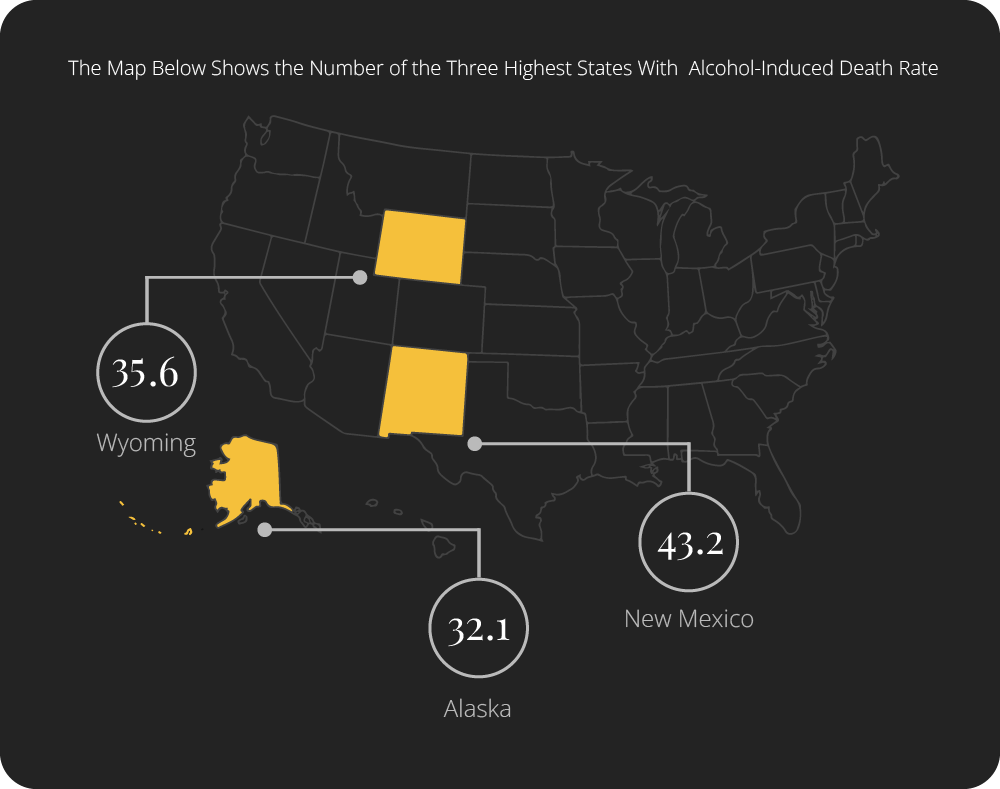
A Closer Look at Age and Gender
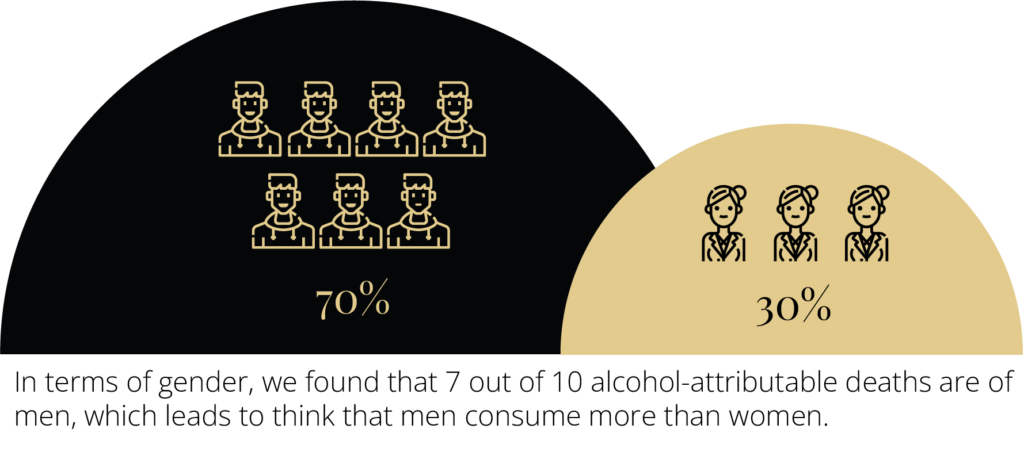
As for diseases, the list below compares men and women in terms of alcohol attributable deaths.
- Hypertension: women account for 60% of deaths caused by alcohol-induced hypertension.
- Liver, gallbladder, and pancreas: men account for 56% of deaths caused by alcohol-induced liver, gallbladder, and pancreas diseases.
- Cancer: men account for 76% of deaths caused by alcohol-induced cancers.
- Heart disease: men account for 55% of deaths caused by alcohol-induced heart diseases.
- Other chronic causes: men account for 65% of deaths caused by other alcohol-induced chronic causes.
UK Statistics
More than half a million brits (602,391) are dependent drinkers. Still, only 18% of them receive treatment. Moreover, around 14 deaths per 100,000 people are caused by alcohol, with the latest data showing 8,974 alcohol-specific deaths (an 18.6% increase from the previous year).
While there are many ways Alcohol can take one’s life; for Brits, it’s the alcoholic liver disease, making for more than three-quarters of alcoholic-specific deaths.
Who is more at risk?
Rates of male alcohol-specific deaths are twice those of females.
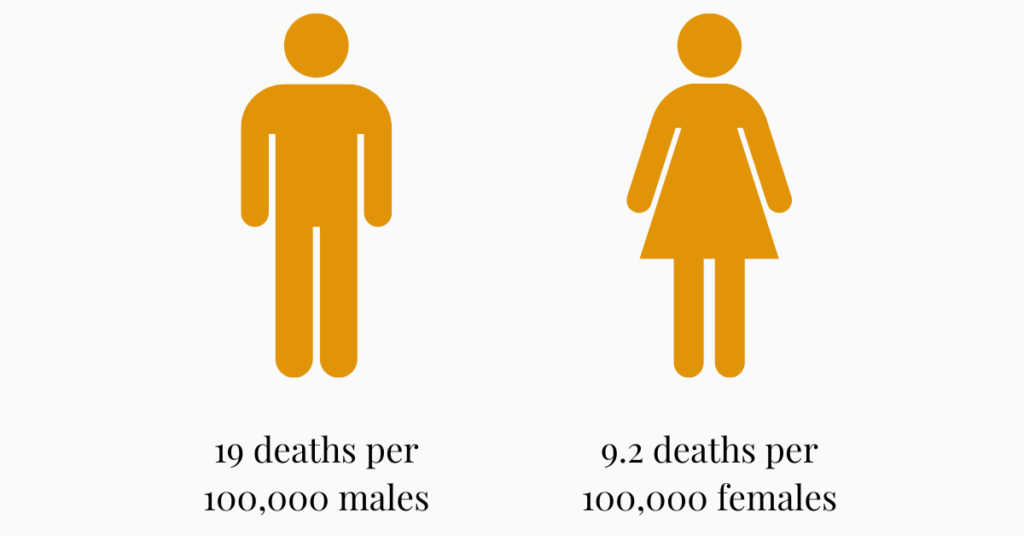
The alcohol-specific death rate for males (19 deaths per 100,000 males) is around twice the rate for females (9.2 deaths per 100,000 females). This makes sense since 30% of British men drink more than 14 units of alcohol per week, with women drinking half as much (15 units per week).
Alcohol spendings is increasing. Is that stopping the Brits?
The latest data show that on average, Brits spend £386 on alcohol every year. But is that stopping the Brits from consuming alcohol? Yes, and no. While the UK doesn’t rank in the Top 10 countries that consume the most alcohol, it still stands above average. On average, Brits consume 11.45 liters of alcohol per year, while the average is 5.82.
Alcohol Abuse and COVID-19 pandemic
When COVID-19 occurred, people were confined in their homes, which affected their mental health badly. As a result, 15% of Americans increased their alcohol consumption during the pandemic. Further, the sales of alcohol increased by 2.5% as people found comfort through alcohol. Alcohol deaths increased to 99,107 in 2019-2020.
Alcohol Abuse Recovery
Alcohol abuse recovery can for sure be a long and bumpy road: 30% of people who attempt to stop drinking relapse during their first year. Further, 70% of people relapse at some point in their lives.
In a study by the recovery village, it was found that 72% of persons attempted to stop drinking and detox at home, while 28% visited rehab centers or hospitals. Further, relapse rates in America have changed from 40% to 70%, which shows a step back in the recovery process.
However, because recovery is a long process and cannot be rushed, it does not mean that it is impossible. There are currently 40.3 million individuals fighting a substance use disorder, of which 28.3 million also battle an alcohol disorder.
Expert Tips on How to Prevent Alcohol Abuse
While alcohol has a huge impact on our health, it also has an impact on the economic costs. So we are not only harming our health but also spending thousands of dollars on alcohol. Although alcohol cannot be completely eradicated from our culture, there are some measures we can take to try and cut down on its use. This is what experts suggest.
Avoid your usual drinking triggers
“You’re best off avoiding people, places, and things that can remind you of drinking. If you’re struggling with going booze-free for the month, perhaps have your loved ones put away the alcohol ahead of time and try not to drink around you. You can also participate in an event with someone else who agrees not to drink so you don’t feel alone” (The Beet)
Stacy Cohen, MD
Psychiatrist, Founder of The Moment

Make a Plan
“Start easy. Instead of aiming for complete abstinence, for instance, aim to drink fewer than seven days a week. Try sober Mondays or sober Mondays through Wednesdays.” (Forbes Health)
Fulton T. Crews, Ph.D.
Director of the Bowles Center for Alcohol Studies at the
University of North Carolina

Exercise
“For those who have access to and enjoy outdoor activities and other physical activity options, we know that physical activity, particularly in nature, can be very helpful in reducing anxiety and coping with other negative moods.” (Forbes Health)
Katie Witkiewitz, Ph.D.
Psychology Professor at the University of New Mexico.









